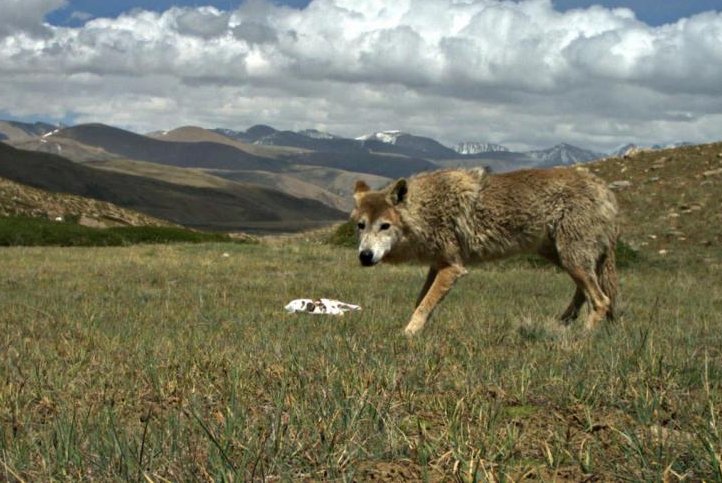Himalayan wolf uniquely adapted to life at high altitudes
Feb. 20 (UPI) -- Through a combination of genetic analysis and field observations, scientists are gaining new insights into the uniqueness of the mysterious Himalayan wolf.
According to the new study, published this week in the Journal of Biogeography, the Himalayan wolf is genetically adapted to life at high altitudes.
"The outcome of this research is absolutely astonishing," lead researcher Geraldine Werhahn, zoologist at University of Oxford, said in a news release.
Prior to the study, scientists had hints that the Himalayan wolf was genetically unique from the grey wolf, but they weren't sure why. Data was hard to come by.
"Now we know that these wolves are different from genetics to ecology, and we have an indication of what the reason may be: the evolutionary fitness challenge posed by the low oxygen levels in the extreme high altitudes," Werhahn said.
The research showed the range of the Himalayan wolf is more expansive than previously realized, encompassing high altitude regions throughout Asia, including habitats of the Himalayas and the Tibetan Plateau.
Scientists watched the dens of wolves in Nepal and found Himalayan wolf packs feature five wolves on average, smaller than the packs of grey wolves.
Researchers also used scat samples to study the wolves' DNA, and found a variety of genetic markers indicating the Himalayan wolf's distinct evolutionary history. The scat samples also helped scientists study the diet of the Himalayan wolf.
By studying the movement and diet patterns of the Himalayan wolf, scientists hope to create improved wildlife management and conservation plans. In places where the wolf's preferred prey are declining, the new research suggests wolf-livestock interactions are more likely.
Retaliation killings by livestock owners are one of the wolf's biggest threats, but according to researchers, improved wildlife management strategies could help protect the wolf.
Because the wolf's home consists of some of the largest intact pieces of wilderness left on Earth -- and is home to the sources of freshwater drank by millions -- scientists say it is imperative that the Himalayan wolf is protected.
In addition to developing improved conservation plans, scientists plan to conduct additional field research to gain a better understanding of the wolf's ecology, behavior and population size.


No comments:
Post a Comment